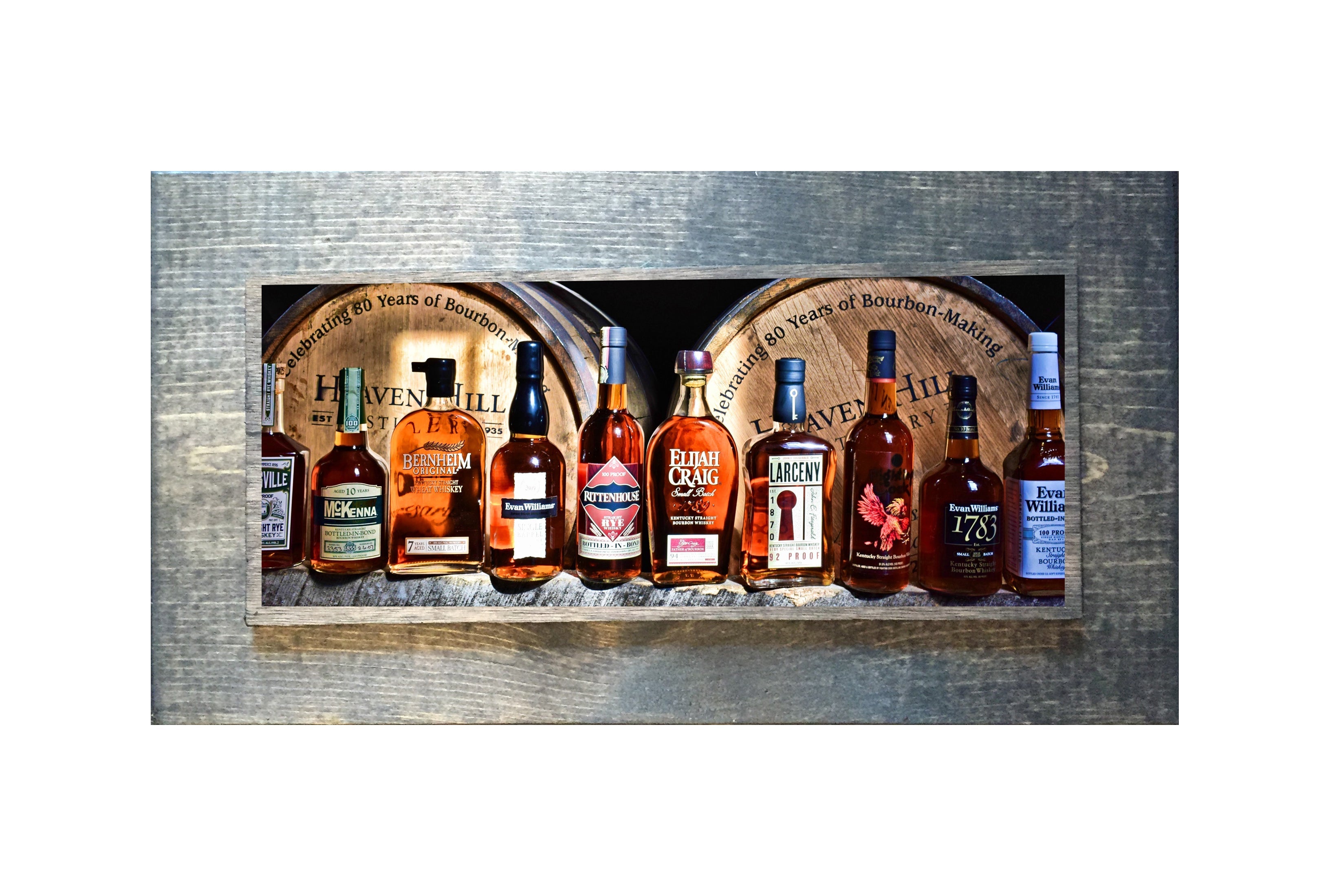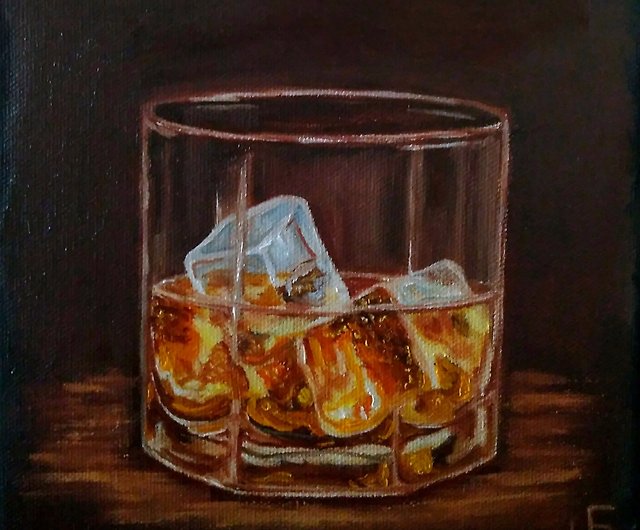Limited Edition Bourbon Art: Why Collectors Are Crowding to Special Finds
Wiki Article
The Importance of Whiskey Art in Celebrating Heritage and Craftsmanship in the Beverage Sector
The detailed relationship between whiskey art and the party of heritage and workmanship within the drink industry can not be overstated. Through thoughtfully made containers and labels, whiskey brands envelop their historical origins and the artisanal skills that define their manufacturing methods.The Historic Roots of Whiskey
At the heart of whiskey's allure lies an abundant tapestry of historical roots that trace back to old people. The beginnings of bourbon can be linked to the distillation practices of the Sumerians and Babylonians around 2000 BCE, where early forms of fermented grain beverages started to emerge. It was in the Center Ages that the art of distillation progressed dramatically, especially in Ireland and Scotland, leading to the development of scotch as we know it today.
The term "bourbon" itself stems from the Gaelic word "uisce beatha," meaning "water of life." This expression emphasizes the social relevance of whiskey in Celtic cultures, where it was typically connected with routines, parties, and public bonding. By the 15th century, distillation ended up being an acknowledged craft within reclusive neighborhoods, leading the method for the establishment of lawful distilleries.
As trade paths expanded, whiskey's popularity expanded, going beyond regional limits and capturing the interest of lovers worldwide. Limited Edition. This historic journey shows not just the craftsmanship behind scotch manufacturing but likewise its integral duty in social and social contexts, noting it as a substantial beverage throughout background
Artistic Expression in Branding
Bourbon branding stands as a compelling intersection of virtuosity and business, where visual identity plays a crucial role in shaping customer assumption. The aesthetic appeals of scotch labels, packaging, and advertising and marketing materials reflect not just the brand name's story however likewise its core worths and heritage. With imaginative expression, distilleries convey a story that resonates with consumers, stimulating emotions and sparking links.The usage of shade, typography, and imagery in branding offers to separate products in a saturated market. Traditional motifs may evoke a sense of authenticity and workmanship, while modern designs can signify innovation and forward-thinking. This calculated imaginative instructions enhances brand name recognition and commitment, allowing consumers to create a personal partnership with the whiskey they pick.
Moreover, artistic expression in branding commonly acts as an event of local heritage. Distilleries regularly include local symbols or historic references into their layouts, developing a sense of place that invites customers to engage in a more comprehensive cultural experience. Ultimately, the creativity behind bourbon branding not only boosts aesthetic allure yet additionally improves the overall narrative of the brand name, promoting a deeper admiration for the craftsmanship and heritage embedded in each bottle.
Workmanship in Container Layout
The virtuosity noticeable in whiskey branding prolongs past visual identity to encompass the workmanship included in container style. Each container functions as a vessel not just for the spirit within, however additionally for the story it outlines its tradition, high quality, and beginning. The layout procedure requires thorough attention to information, as aspects such as closure, form, and product add substantially to the overall perception of the whiskey.Workmanship in container layout involves choosing top quality glass that can enhance the whiskey's shade and clarity, while click resources likewise providing a tactile experience for the customer. The silhouette of the container should be both functional and aesthetically appealing, usually mirroring the heritage of the brand. Lots of distilleries select one-of-a-kind forms or printed logo designs that stimulate a sense of credibility and history.
In addition, the label layout and typography play an essential function in connecting the brand name's story. Whiskey Art. A well-crafted container not just mesmerizes the consumer's eye yet likewise enhances the brand's dedication to top quality and tradition. By doing this, the craftsmanship of bottle layout ends up being an important element of the whiskey experience, merging virtuosity with a profound respect for heritage
Social Importance of Scotch Art
Commemorating practice and workmanship, the social significance of whiskey art transcends mere aesthetic appeals, intertwining with the social and historic narratives of the regions from which it comes from. Each bottle works as a canvas, showing the distinct stories, mythology, and practices that have formed regional whiskey-making methods. The complex styles typically show the heritage of the distillers, including icons and motifs read this article that resonate with the society and values of their communities.
On top of that, scotch art plays a crucial role in communal events and celebrations, functioning as a substantial web link in between individuals and their shared experiences. By valuing the creativity in bourbon product packaging, customers cultivate a deeper understanding and regard for the craft, inevitably improving their enjoyment of the drink itself.
Modern Trends in Whiskey Presentation
In the last few years, the presentation of whiskey has actually evolved to show modern preferences and trends while still recognizing standard workmanship - Realism Art. Distilleries are significantly concentrating on visual components that enhance the overall alcohol consumption experience, connecting the space in between heritage and modernityCutting-edge container styles have actually arised, often integrating lasting products and imaginative tags that inform compelling tales. Lots of brands now team up with neighborhood artists, instilling their products with unique visual expressions that reverberate with consumers. Furthermore, limited-edition releases are frequently packaged in collectible containers, including worth and appeal for lovers.
Verdict
Finally, bourbon art works as an important channel for revealing the heritage and workmanship inherent in the drink sector. With elaborate branding, cutting-edge container styles, and culturally substantial imaginative elements, whiskey brands effectively honor their customs and connect with consumers. This imaginative story not just boosts the recognition of whiskey but additionally reinforces community identity and pride among producers. Inevitably, whiskey art plays a necessary duty in preserving and celebrating the rich social tapestry of whiskey-making.

Craftsmanship in bottle style involves choosing top notch glass that can boost the bourbon's shade and quality, while also offering a responsive experience for the consumer. In this means, the workmanship of bottle layout comes to be an essential facet of the bourbon experience, combining creativity with an extensive respect for heritage.
In conclusion, whiskey art serves as a crucial conduit for expressing the heritage and workmanship inherent in the beverage market.
Report this wiki page